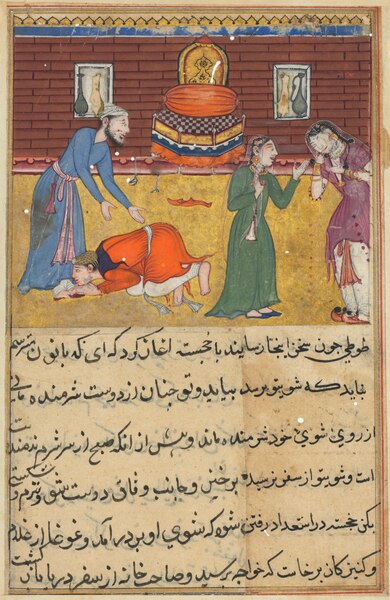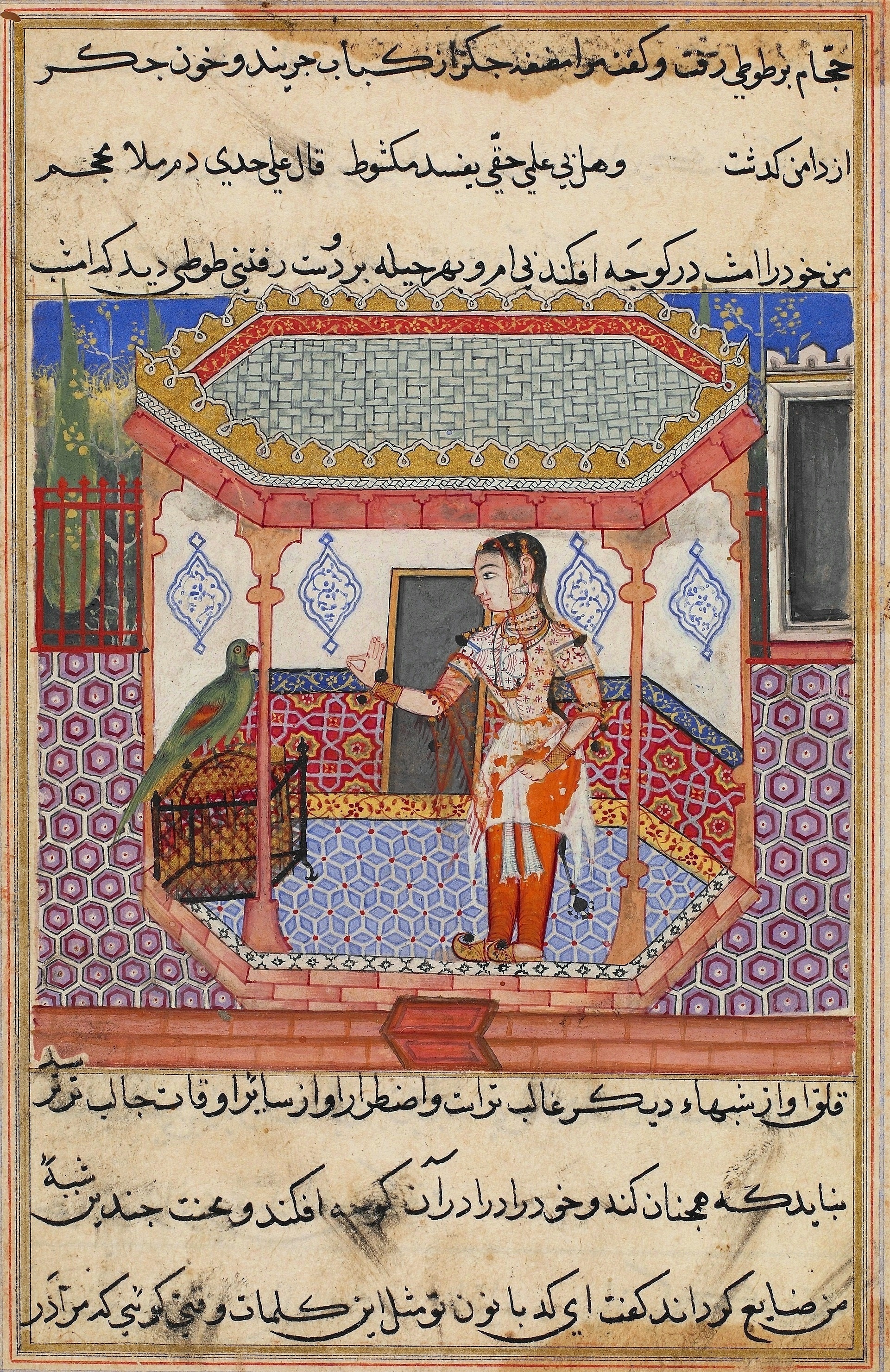 |
|
We can count the number of blood-groups available in the world. We can do it by using our hand-fingers. But we cannot count the beliefs of different people living on our great planet, the Earth.
Look at this. In India, and in the northern part of Asia, it is believed that the parrot has the abilities to talk. This belief has inspired the writers to write stories wherein the parrots talk with their masters.
In the 12th century, Indian
artists painted parrots telling the stories. This style of painting was also
popular among the Persian artists of later centuries. Inspired by ancient art,
Mughal Emperor Akbar (1542-1605) motivated the artists in his court to paint the
parrot stories. And the painting series, known as Tutinama, was the outcome.
In this series of paintings, a parrot tells stories to its master lady. She is alone, as her husband has gone on a long business journey. The master lady hears the stories day by day and night by night. It is believed that there are 52 stories. There are paintings done for the depiction of every story. The paintings showed the parrot telling the stories, and the lady hearing the stories.
 |
|
In order to make the paintings more realistic, the artists added several other objects into the frame of the paintings. The paintings were miniature in size. However, the contents of the series told by the parrot mainly remained similar to the stories told in the Persian miniatures. But the Tutinama paintings had added calligraphy to the paintings. This style of painting, the illustration part, was in vogue among the artists who painted and illustrated the Sanskrit scriptures. Akbar accepted the practice of illustrating the Sanskrit books.
Two Persian artists named Mir Sayyid Ali and Abdus Samad were the heads of the project Tutinama. Emperor Akbar had entrusted them with the project to depict the Indian environment. They were the artists originally belonging to the Persian style of painting. They were brought to India by Akbar’s father, Emperor Humayun, for the promotion of art in India. Among other projects, they got the Tutinama. Emperor Akbar wanted it. The Emperors had their choices. The artists followed the Emperor's choices.
Several original copies of the paintings done under the
nomenclature and style of Tutinama is displayed at the Cleveland Museum of Art in Ohio. Some of them are displayed at The Chester Beatty Library, Dublin.
Several other paintings done during the Mughal Emperors' time are displayed in
various art museums in India, too.
 |
|
 |
|
Here is one of the paintings done for the Tutinama series of paintings. Parrot addressing Khojasta, a lady in Tutinama (Tales of a Parrot). The series of paintings was commissioned by Emperor Akbar of the Mughal dynasty. From the year 1556 to 1565, there was the reign of Emperor Akbar, India. The paintings in Tutinama are painted using materials like Opaque watercolour and gold on paper. [All the images are in Public Domain, taken from Wikimedia Commons]
